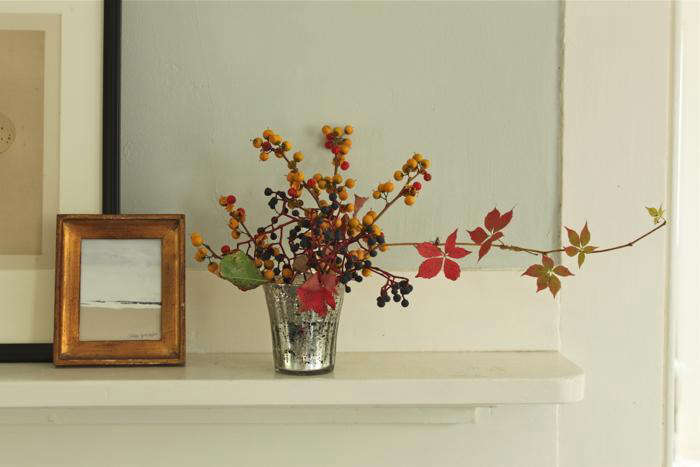Taking photos in the garden is way harder than shooting indoors because you can’t control all the variables (have you ever seen it snow in a kitchen?). I love to take pictures of my garden. But I need help doing it. Which is why my standard response to the photos our talented editors and correspondents take is shock and awe—and begging: “Can you please please please explain how you got that shot?”
Finally they have decided to take pity. Maybe they’re just tired of the begging. In any case, we’re in luck; Gardenista’s editors and correspondents have agreed (just in time for you to enter the Tropical Paradise photo contest) to share their Top 10 photo-taking secrets:
(N.B.: What’s your secret for taking great garden photos? Tell us in the comment section below.)

Tip No. 1: Avoid midday sun or harsh light. It makes flowers and gardens look plastic-y, like they’ve been laminated.
“The English weather is a photographer’s dream,” says Kendra Wilson, our UK correspondent. “As long as the day is not actually dark, the softness of rain and cloud means you can shoot all day instead of just after dawn and just before dusk.” For more of her misty photos, see “A Gothic Garden Visit, Courtesy of the Mitfords.”
Kendra uses a Leica D-Lux 3, which looks like an old-fashioned tourist camera; a used model is $269.95 and a Leather Case is $74.95 from B&H. “It suits me. When I’m busy it fits in my pocket,” she says. “The lens is a standard one which is fine until you start taking pictures of holly berries and it doesn’t like that; I should then put on a micro lens but don’t take the time. People always say ‘I like the leather case’ and I have to admit that the whole package fits my mental idea of what a camera should look like.”
Tip No. 2: Take as many shots as as possible of the same thing, trying different angles and distances.
“Tweak each shot slightly until you’ve got it just right,” says Remodelista’s San Francisco editor Sarah Lonsdale, who uses an iPhone to shoot. “The beauty of digital is you can look at it right away and know when you got the shot you wanted.” For more of her photographs of the olives that grow in her Napa garden, see “DIY: Home Cured Olives.”

Tip No. 3: Remember that God is in the details.
When our London Editor Christine Hanway recently visited antiques dealer Will Fisher’s home, she focused her camera on the many vignettes and details tucked into the design of his garden. “I find ‘overall’ shots tricky because gardens have so much going on that those wide-angle photos often seem too general and boring,” she says. “Instead, I try to look for an architectural feature or a planting around which to compose the image. For more photos she took that day, see “An Antiques Collector’s Garden in London.”
Christine shoots with a Sony NEX-5, the smallest and most lightweight interchangeable lens camera she could find. “For me, it’s the right balance of DSLR and pocket camera. Anything bigger, I would more likely than not pack it in my bag to go and anything smaller would not give the quality of image I need.” A Sony Alpha NEX-5r Camera is $669.99 from Sony.

Tip No. 4: Look for the “architecture” of a plant.
Our East Coast correspondent Justine Hand arranged bittersweet berries and Virginia creeper vines in a case to create this arrangement. “Just like with buildings or homes, whenever I’m photographing flora I look for the ‘architecture’ of the plant—dramatic angles or curves created by leaves, stems or blooms,” she says. For more of her architectural arrangements, see “5 Favorites: Foraged Bouquets.”

Tip No. 5: Get face-to-face with flowers. “I try always to get down on their level when I’m taking the picture,” Justine says.

Tip No. 6: Get a portable, streamlined editing program you can use on the go.
“I like the portability of having my iPhone camera with the Photoshop Express app for editing on the fly,” says Remodelista’s San Francisco editor Alexa Hotz. “It’s particularly great to use when you’re taking photos in the harsh sun.”
In the example above, on the left is a photo Alexa took of tulip magnolia in full bloom, then edited it to soften the colors. Adobe Photoshop Express for iPhone is free, download it from iTunes.

Tip No. 7: Tone down the exposure and brightness. After taking the photo on the left in sunlight at a local park, Alexa used Photoshop Express to make the berry-dotted bushes look more natural.

Tip No. 8: Turn off the flash.
“An incredibly obvious tip is to always use natural light, says our Brooklyn correspondent Erin Boyle. “Even when the light is dim, if I’m able to sidle my subject up close to a window, I can almost always get a nice shot.” For more photos of her window boxes, see “DIY: A window Box Grows in Brooklyn.”

Tip No. 9: Get the shortest depth of focus possible.
When shooting closeups, our San Francisco editor Janet Hall likes to “blur the background and put an intense focus on the item at hand. Accordingly, I go for the smallest aperture setting (which really means the largest lens opening) that my camera will handle.” For more of her photos, see “Seed Source: The Homestead Squash Seeds.”

Tip No. 10: Bring the garden indoors and shoot plants in a larger context.
OK, I admit it—I took this one. Camellias were blooming in my yard last week, but on the bushes they looked like generic pink blobs (at least through my viewfinder). I brought them into the living room and created a story for them, involving a crystal vase and a hint of a silver tray. I am hoping it will distract you from any technical flaws.
Interested in entering a garden photo contest? If you’re in New York City, see “A Tropical Paradise, Reachable by Subway.”

















Have a Question or Comment About This Post?
Join the conversation (7)